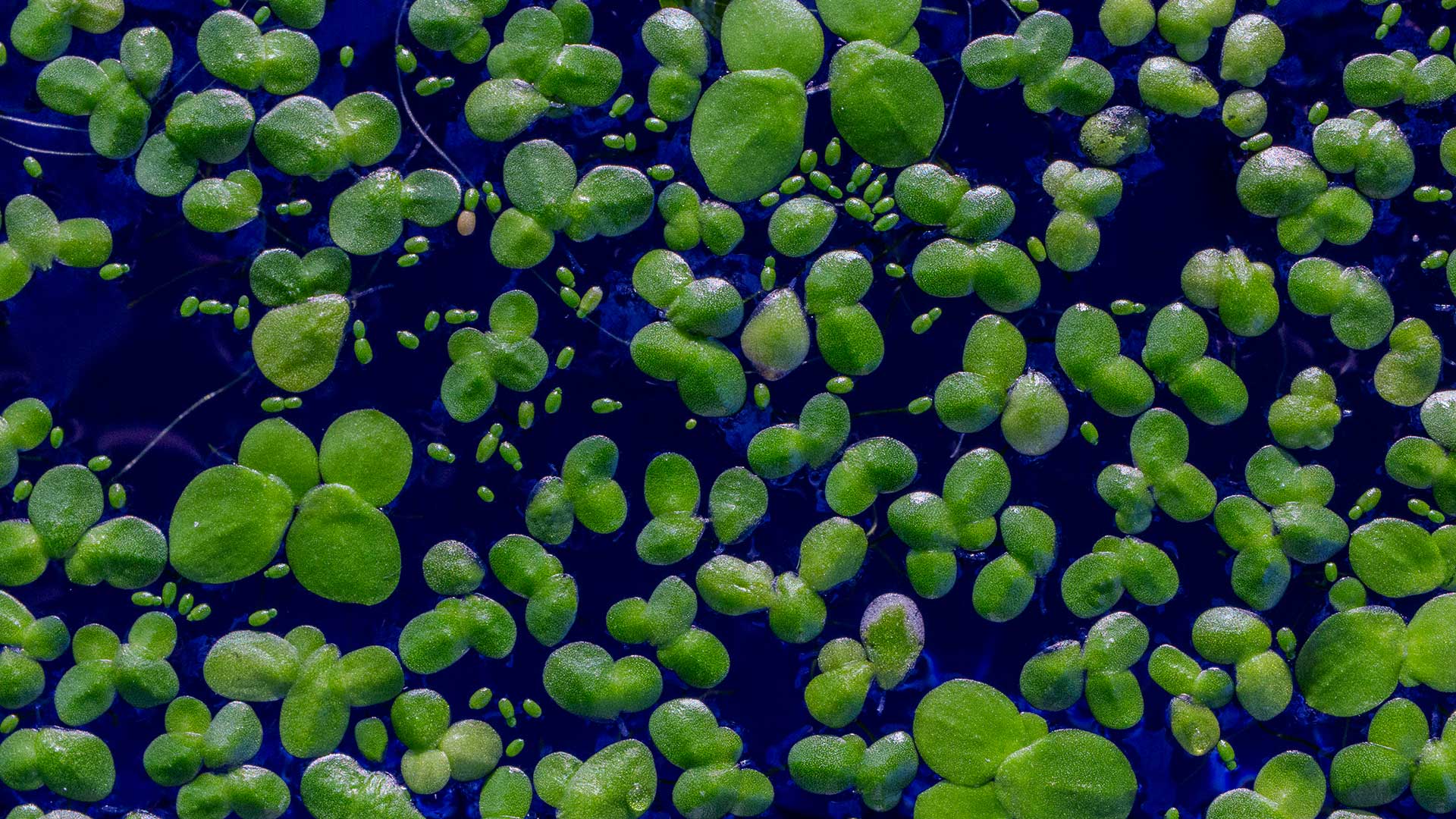
Genome Sequences for Five Duckwood Species Reveal Potential for Food and Fuel Source
April 16, 2025| |
Duckweed is an aquatic plant that farms itself. It grows on wastewater, ponds, swamps, and even on puddles. Duckweed also has enormous potential as a soil enricher and fuel source. A study at Cold Spring Harbor Laboratory (CSHL) could help bring all that potential to life.
CSHL Professor and Howard Hughes Medical Institute (HHMI) Investigator Rob Martienssen and Computational Analyst Evan Ernst started working with duckweed over 15 years ago. Their latest research, published in an article in Current Biology, reveals new genome sequences for five duckweed species, revealing genes that may be behind the plant's unique traits and versatility.
Professor Martienssen explained that they used cutting-edge technology to make a catalog of genes that was extremely accurate. The research team found candidate genes for reduced anatomy, stomata development, and carbon storage. Other species possess traits that showcase duckweed's potential as a food and fuel source. Some traits promote high protein production, allowing for use as animal feed. Others promote starch accumulation, making the plant ripe for biofuel production.
For more details, read the news release in CSHL Stories and Media or download the open-access paper in Current Biology.
| |
You might also like:
- Engineers Discover Bacterium for Greener and Cheaper Biofuel Production
- Scientists Determine Successful, Cost-Efficient Biofuel Production
- Pocket K No. 24: Biotechnology for Green Energy: Biofuels
Biotech Updates is a weekly newsletter of ISAAA, a not-for-profit organization. It is distributed for free to over 22,000 subscribers worldwide to inform them about the key developments in biosciences, especially in biotechnology. Your support will help us in our mission to feed the world with knowledge. You can help by donating as little as $10.
-
See more articles:
-
Plant
- Research Reveals Cry1Ab Kills Pests Through Two Pathways; Increasing Sustainability of GE Crops
- Two Insect-resistant Maize Events Reduce Fumonisin Pollution in China
-
Animal
- ISAAA Webinar Explores Animal Biotech Regulations in the Philippines
-
Food
- FSANZ Approves First Cell-Cultured Food to be Marketed and Sold in Australia and New Zealand
- Lettuce Biofortified With Folate Stable in Field Conditions
-
Health
- Scientists Develop New Gene Editing Tool that Replaces Entire Genes
-
Environment
- Genome Sequences for Five Duckwood Species Reveal Potential for Food and Fuel Source
- Water Stress Improves Triacylglycerol Production in High-leaf Oil Tobacco Plants
-
Read the latest: - Biotech Updates (December 10, 2025)
- Gene Editing Supplement (December 17, 2025)
- Gene Drive Supplement (February 22, 2023)
-
Subscribe to BU: - Share
- Tweet

